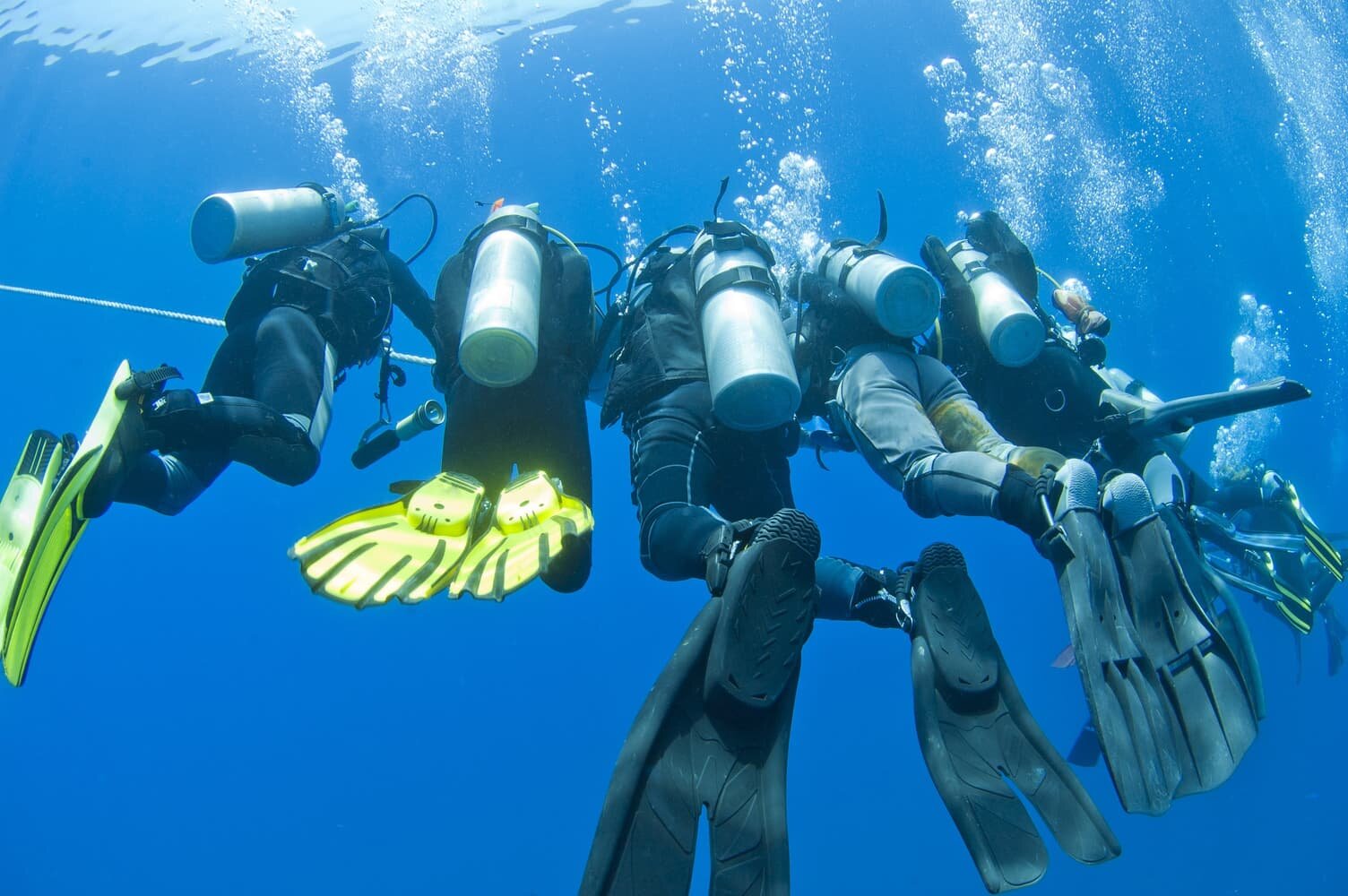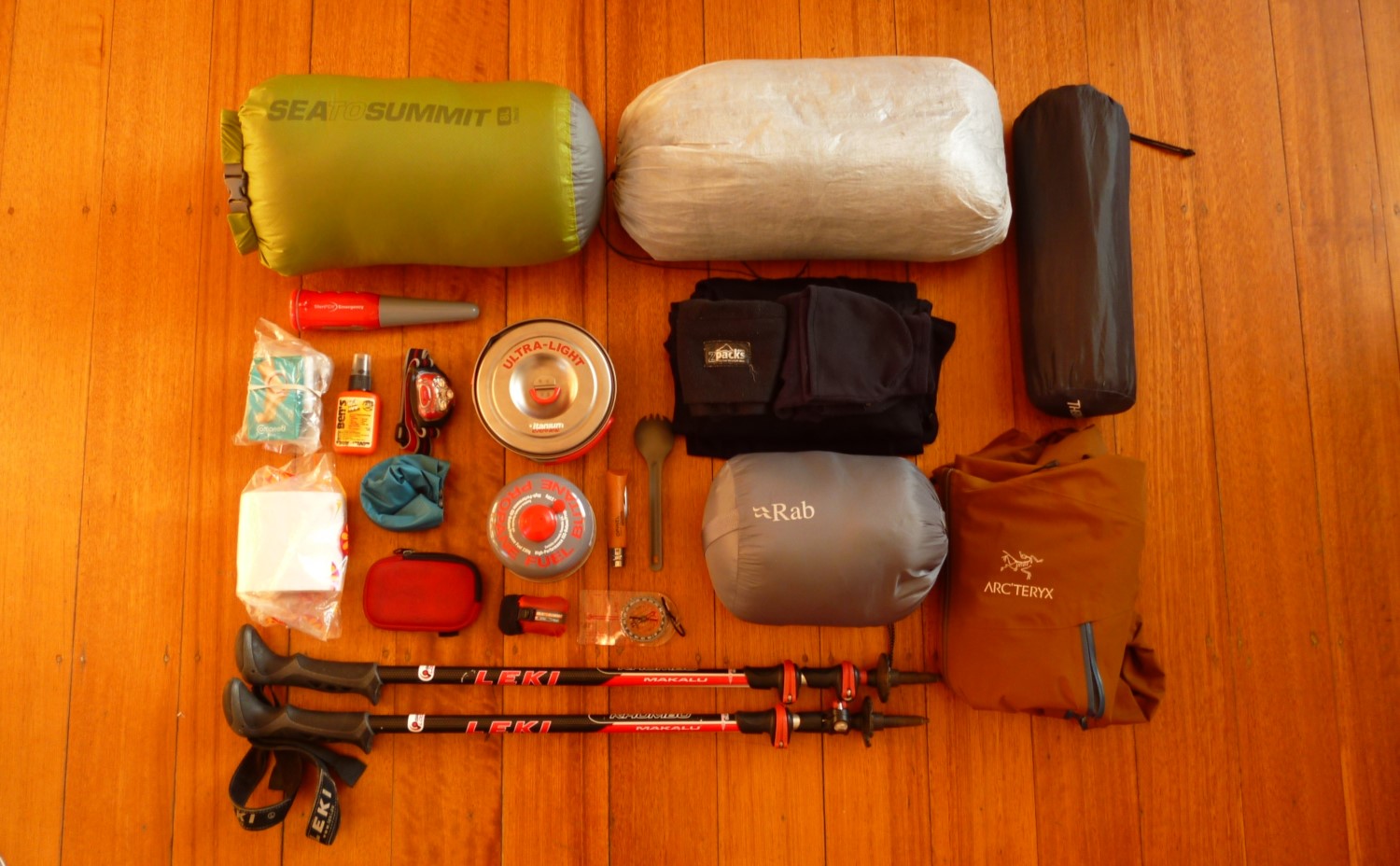Best Scuba Fins of 2023
JUMP TO: MARES AVANTI QUATTRO PLUS / TUSA SOLLA / SCUBAPRO GO TRAVEL / ATOMIC AQUATICS / CRESSI CLIO / TUSA LIBERATOR X-TEN / SCUBAPRO SEAWING NOVA / BUYING ADVICE
Author: Rose Martin
The Short Version
Best All-Rounder: Mares Avanti Quattro Plus
Best For Beginners: Tusa FF-22 Solla
Best For Travel: Scubapro Go Travel
Best Split Fins: Atomic Aquatics
Best Budget (Closed Heel): Cressi Clio
Best Budget (Open Heel): TUSA Liberator X-Ten
Best For Efficiency: Scubapro Seawing Nova
The Long Version
Ever had a fin slip off while you’re on a dive? If you have, you were probably surprised at how useless you were underwater without it! After all, we were designed for life on land and, without the right gear, we’re out of our element down below.
Scuba fins might be a simple bit of kit, but they transform us from slow, awkward aquatic creatures into elegant, powerful divers. Plus, wearing the right pair of fins saves you heaps of energy – which means more air and longer dives (and who doesn’t want longer dives?!).
There’s a bunch of other factors to consider too – do you like diving barefoot or with booties? Do you prefer to flutter or frog kick? Will you be diving in hectic or calm waters? And, of course, no matter what style you go for, your fins need to be comfortable too.
But with such a range of fins on the market nowadays, choosing the right pair can be a little daunting. That’s why we’ve brought you a varied collection of the best scuba fins currently around – happy diving!
If you love reading this review of the best scuba fins, then you'll likely love reading some of our other diving related pages:
Need To Know What To Look Out For?
Closed heel or open heel? Split fin or paddle fin? Bungee straps or buckle straps? If you find yourself asking these questions, then be sure to check out our buying advice at the bottom of the article!
Best All-Rounder: MARES AVANTI QUATTRO PLUS
HEEL STYLE: Open
FIN TYPE: Non-vented blade
MATERIAL: Tecralene, rubber
STRAP TYPE: Bungee
WEIGHT: 4 lbs (pair, regular size)
PRICE: $$$
PROS: Very flexible, efficient, can be used with boots or socks
CONS: Slightly expensive, sizes run a little large, length can make packing awkward
The Avanti Quattro Plus fins are the latest in the much-loved Avanti range by Mares. The blades are nice and long and feature four channels running down them to ensure maximum propulsion with minimal effort.
The open-heel design features an anatomical foot pocket that’s large enough to accommodate booties, yet the overall design is closed enough that you can get away with wearing these fins with socks if you prefer.
Constructed from high-flex, durable material, and featuring a relatively simple design, these fins can handle some abuse. This has made them very popular among regular divers and intrepid travelers (or at least ones with large suitcases). What’s more, the new-and-improved heel strap is now one of the fins best features – it’s super comfortable, very unlikely to snap on you, and features a convenient loop that lets you whip your fins off in seconds (and also lets you hang your fins out to dry when you get home).
These fins are also some of the most attractive open-heeled fins on the market thanks to their sleek, elegant design. Oh, and they come in a range of colors too. They might not be the cheapest fins out there, but they’ve received praise from divers around the world, and they’re definitely worth it if you can afford it. A word of advice though – the sizes do run a little large so you might want to downsize, especially if you have narrow feet.
Best For Beginners: TUSA FF-22 SOLLA
HEEL STYLE: Open (closed also available)
FIN TYPE: Vented blade
MATERIAL: Thermoplastic elastomer
STRAP TYPE: Buckle
WEIGHT: 3.4–4.4 lbs (per pair, depending on size)
PRICE: $$
PROS: Great power-to-effort ratio, comfortable, lots of colors available
CONS: Not the cheapest beginner option, require booties
The TUSA FF-22 Solla fins are an awesome choice for any beginner scuba divers out there. The blades are vented, feature three channels and have been cleverly angled at 20° so they slice through the water with incredible efficiency. But you can rest assured that this doesn’t come at the cost of propulsion – the rigid thermoplastic polymer used for the blades will have you soaring through the water even when the current picks up.
The open-heel design accommodates a range of foot shapes, and the anatomic fin strap is firm and surpringly comfortable – just what you need when you’re getting used to things. They’re also fairly light for a pair of powerful, open-heeled fins, further increasing comfort and ease in the water.
And when it’s time to get out of the water, the EZ buckle and strap system makes things, surprise surprise, super easy – just a push of the button releases the strap. Plus, while it’s not the most important factor, these fins are also available in a bunch of different colors, which is great for people who love to color coordinate their dive gear.
These fins aren’t the cheapest beginner option (and you’ll have to pick up some booties too) – if you’re heading out to calm tropical waters and want to save some cash, you can probably get away with a cheaper, less powerful pair (most likely closed heel). But, if you’re new to the world of scuba and want a pair of super comfy fins that can hold you steady in a current, then look no further than the TUSA FF-22 Solla.
Best For Travel: SCUBAPRO GO TRAVEL
HEEL STYLE: Open
FIN TYPE: Blade
MATERIAL: Monprene, rubber
STRAP TYPE: Bungee
WEIGHT: 2–3 lbs per pair (depending on size)
PRICE: $$
PROS: Lightweight, compact, powerful, comfortable
CONS: Not suitable for cold-water diving
The Scubrapro Go Travel fins are, as the name suggests, an awesome pair of lightweight fins designed to make lugging your scuba gear around that bit easier. But it’s not just the lack of weight that makes these fins so good for traveling – they’ve also been designed to stack on top of each other, forming a super compact, interlocking bundle that’s perfect for stashing at the bottom of your suitcase.
Despite their light weight, these fins have plenty of power behind them thanks to the broad paddle design and flexible construction. The angle of the blades means that they cut through water very efficiently, reducing the chances of leg cramp and saving your energy (and air!).
These fins feature an open-heel design, yet the small open-toe foot pocket is designed for use with bare feet or dive socks. The bungee strap is very comfortable, easy to take on and off, and less likely to break than a buckle strap when in transit (although you can purchase spares just in case).
Although some people will love the natural barefoot feel of these fins, it means they aren’t ideal for cool climates where booties are needed. But, if you’re lucky enough to be heading out on a tropical scuba diving venture, then these are an awesome pair of fins to pop in your bag.
Best Split Fins: ATOMIC AQUATICS SPLIT FINS
HEEL STYLE: Open (closed also available)
FIN TYPE: Split blade
MATERIAL: Composite plastic, rubber
STRAP TYPE: Buckle
WEIGHT: 5 lbs (pair)
PRICE: $$$$
PROS: Awesome power to effort ratio, great for precise movements
CONS: Expensive, heavy, not as good in strong currents as paddle fins
The Atomic Aquatics Split Fins feature a long, slim design that looks incredibly stylish, but that’s not the only reason we love them so much.
The split in the middle of the blade reduces water-resistance and drag, so you can maneuver these fins with minimal effort. Plus, the blades feature both flexible and rigid patches that provide great overall responsiveness, which is great for carefully controlling your position in the water.
Split fins typically deliver less power than paddle fins, but this has been somewhat overcome by the long length of these blades and a rigid section at the base of the foot that maximizes the effect of each kick. Ultimately, you may have to kick a little more often to reach top speeds, but for casual cruising, these fins are super-efficient – which means you won’t get through your air so quickly and can dive for longer, yay.
The small toe opening and flexible yet durable steel spring strap ensure a cozy fit, and the straps can easily be removed via the buckles so you can hop aboard in an instant.
With all these fancy features, it’s not surprising that these fins don’t come cheap… in fact, they’re the most expensive on our list. The long length of the blades has also ramped up the weight, so they aren’t the ideal pair of fins for shoestring travelers. But, for anyone looking for an ultra-efficient, super stylish pair of fins that won’t let you down, then the Atomic Aquatics are an awesome option.
Best Budget (Closed Heel): CRESSI CLIO
HEEL STYLE: Closed
FIN TYPE: Blade
MATERIAL: EVA, rubber
STRAP TYPE: N/A
WEIGHT: 1.5 lbs
PRICE: $
PROS: Portable, great for snorkeling, very soft pocket, easy to slide on and off
CONS: Less powerful than bulkier models, not suited to cold-weather diving
The Cressi Clio fins are our favorite pair of budget scuba fins around, and the best part is, they double up as great snorkeling fins too.
The light weight combined with the closed-heel design means that you can wear them barefoot and hardly notice that you’re wearing them – perfect for anyone that hates feeling bogged down by heaps of gear!
The super soft foot pocket only adds to the comfort, but be warned that they might not be the best choice for anyone with extremely narrow feet (you’ll be better off with an adjustable strap).
The light weight also makes them easy to carry around, and they’ll even fit in some backpacks. This makes them great for holidays when you never know when you might want to hop in the water for a quick refreshing snorkel. Granted, the short length does reduce the power behind these fins, so you’ll find yourself kicking more frequently than with longer, larger fins (especially if the current get hectic). For mild to moderate currents, however, these fins can hold their own thanks to the paddle design. Plus, the simple design combined with the use of durable EVA material means that they’re unlikely to break on you any time soon.
All-in-all, these fins are portable, durable, and super comfortable… and come at a fraction of the price we’d expect!
Best Budget (Open Heel): TUSA LIBERATOR X-TEN
HEEL STYLE: Open
FIN TYPE: Non-vented blade
MATERIAL: Composite plastic, rubber
STRAP TYPE: Buckle
WEIGHT: 3 lbs (pair, regular)
PRICE: $
PROS: Great for cold climates, affordable, durable, portable
CONS: Only two sizes available, can’t wear barefooted
If you don’t want to splash the cash, but have decided open-heeled fins are the way to go, then look no further than the TUSA Liberator X-Ten.
The paddle-style blades feature stabilizers to ensure ample power with every stroke, yet the semi-flexible material and the side rails ensure enough flexibility to prevent overexertion. The blades are also fairly short in length which, combined with the light weight and durable material, makes them a very travel-friendly option.
The foot pocket is designed for use with booties, and the EZ strap and buckle system is easy to use even with gloves on, making these fins great for cooler climates. Although the strap can be adjusted for the optimal fit, be warned that these fins only come in sizes small and regular (no large unfortunately).
They might not come jam-packed with all the fancy features you get in higher-end models, but for the price, you really can’t beat ‘em.
Best For Efficiency: SCUBAPRO SEAWING NOVA
HEEL STYLE: Open (closed also available)
FIN TYPE: Blade, mid-point joint
MATERIAL: Monprene
STRAP TYPE: Bungee
WEIGHT: 3.45 lbs (pair)
PRICE: $$$$
PROS: Pivot ensures efficiency, great for all kick types, open, closed and extra-strong models available
CONS: Expensive, hinge provides potential weak spot
The Scubapro Seawing Nova fins feature hinges at the base of the extended foot pocket that pivot to form the most efficient angle for your kick. Plus, this efficiency is maintained no matter how hard you kick and no matter what kick style you use, resulting in incredible all-round performance.
Because kicking effort is drastically reduced and various strokes can be used, these fins are an awesome choice for anyone who suffers from leg cramp – you won’t have to work your muscles so hard and you can switch up your kicks to spread out the effort.
We also love that these fins come in both open- and closed-heel forms, so you can don these high-end fins whether you like diving barefoot or in booties.
Although they certainly aren’t the cheapest fins around, the blades are constructed from a highly durable monprene elastomer that can stand up to the test of time, so you’ll definitely get your money’s worth.
The marine-grade bungee strap won’t let you down in a hurry either and, if you tend to really put your gear through the mill, then you might be interested in the gorilla model – this version features stiffer blades that are not only more durable but also provides added control and power. These fins will set you back a fair bit but, considering their semi-indestructible nature, we reckon they’re worth the investment.
BUYING ADVICE FOR SCUBA FINS
Heel type
CLOSED HEEL: Closed-heel (or ‘full foot’ fins) are designed to be used without booties and cover your entire heel – they slip straight onto your feet for an ‘au natural’ feel. This makes them popular among divers who aren’t keen on wearing lots of gear when they’re in the water and like a speedy kit up.
Because they aren’t designed to accommodate booties, they feature a smaller foot pocket than open-heel fins. This means that they’re typically lighter and less bulky than similar open-heel models. The lack of a strap also makes them less prone to getting caught, tangled, or damaged in transit, so they’re a wise choice for people who travel a lot (and generally cheaper than open-heeled fins).
Despite these pros, the lack of booties is a major drawback if you’ll be diving in cool water or walking over rocks to reach your dive site, and the snug fit can’t be adjusted either.
OPEN HEEL: Open-heeled fins typically feature larger foot pockets designed to accommodate feet tucked away inside a pair of dive boots (although some can be worn without). This is ideal for people diving in cold locations, where diving barefoot just isn’t an option, and also for people walking over treacherous terrain to shore dive locations. Plus, you can tighten the strap as much as you like, which makes them more accommodating of variations in foot size than closed-heel fins.
Unfortunately, the extra material for the larger foot pocket and straps does ramp up the price of the fins, and it also makes them bulkier and heavier. Another downside of open-heeled fins is that the strap might break on you eventually (we definitely recommend picking up a spare strap just in case you need it on that next dive holiday!).
Finally, some people prefer to wear booties (and therefore open heel fins) when traveling by boat because they can provide extra grip – but this really is a matter of personal preference!
Strap type
If you decide that open-heeled fins are the way to go, the next thing to think about is what kind of strap you want.
BUCKLE STRAPS: Buckle straps surround the back of the foot and feature dual buckles that clip into openings on either side of the strap. From there, you further tighten the strap to get the optimum fit, and loosen or unclip the buckles when you’re getting out of the water.
This adjustability means they can accommodate a wide range of foot shapes, but the drawback is that they might break in transit (they’re relatively fragile compared to other bits of scuba gear). But the good news is that you can easily pick up spare straps for emergencies.
BUNGEE STRAPS: Bungee straps are made of a flexible material that’s permanently joined to the fin. Although this reduces the adjustability of the overall fit, they can stand up to a decent amount of wear and tear. Some people find them easier to slip off than buckles, but other people will swear the opposite – so you’ll have to see which you find easiest!
Blade design
If you’re unsure which blade design is right for you, then remember: paddle is power. But you can have too much of a good thing, which is why some people prefer other types of fin.
PADDLE FINS: Paddle fins are constructed from a solid panel that literally paddles the water as you swim. The broad, uninterrupted blade surface maximizes how much water is moved with each stroke, propelling you through the water with considerable power.
Because these fins move you further forwards with each kick than split fins do, they’re the preferred option for people that cover lots of ground when they dive. The extra power also means they perform better in strong currents, and, if you find yourself in sticky situation and need to tow someone to shore, paddle fins will get you there far faster than split fins would.
They’re also typically stiffer than split fins (although the stiffness will vary considerably between designs), so you’ll be able to control your movements with more precision. Paddle fins typically work best when used with the flutter kick.
SPLIT FINS: Split fins, as the name suggests, feature a split down the face of the blade. The split allows water to pass through it, reducing the water resistance created with each kick. The differing movements of the two sections creates a vortex that propels you forwards and makes kicking less strenuous.
Because of the way they slice through the water, split fins work especially well when using the frog kick. Plus, the ease of kicking makes split fins a popular choice among divers prone to muscle cramps in their lower legs – but this ease does come at the cost of reduced power. However, if the water is calm, then these fins make casual kicking a pleasure.
HINGE FINS: Hinged fins are the latest addition to the world of scuba fins, and they’ve proved to be extremely popular. They feature a hinge at the base of the foot pocket that adjusts the angle of the fin for maximum efficiency and reduced drag. But the remainder of the blade is in the traditional paddle style, so you get plenty of power. In this sense, hinged fins merge the best of both worlds – reduced resistance with strong power.
What’s more, these fins are highly efficient no matter what type of stroke you’re using, since the angle of the fin adjusts accordingly. Drawbacks of these fins are the high price tags and the fact that the hinges provide a potential break point that’s missing from other types of blade.
Flexibility
The stiffer the fin, the greater the water resistance and the further you move through the water (this is why paddle fins are more powerful than split fins).
Both paddle and split fins will come in varying degrees of flexibility though, and there are other features, such as panels, windows, and vents, that also affect water-resistance.
Ultimately, how flexible a fin you go for comes down to a choice between power and ease of kicking.
Portability
WEIGHT: Powerful fins are typically heavier than those designed for calmer waters. They’re constructed from rigid materials that that tend to weigh more than flexible ones, the surface area is generally larger, and they’ll take an open-heel rather than the lighter closed-heel design. Ultimately, you’ll need to decide whether the extra power is worth the extra weight.
DIMENSIONS: The longer the fin, the more powerful your kicks will be. But long fins aren’t easy to carry around. Again, think about whether you really need the extra length – if there will be strong currents where you’re heading then it’s probably worth it, but if the waters will be calm you might be better off with a short pair of fins.
Short fins have the added bonus of making great snorkeling fins too, and they’re definitely the best choice if you’ll be diving in caves or through tight swim throughs.
MORE INFORMATION
If you loved this gear review article, then you'll likely love reading our other diving related articles:






















